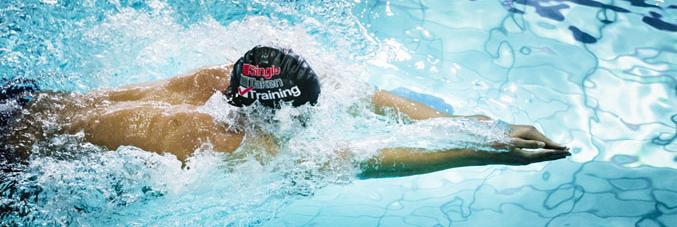
Sudden death of young athletes – discovering the cellular mechanism that causes arrhythmia and death
25.02.2021
Research teams from the University of Padua and the Johns Hopkins University of Baltimore, along with a scientific global collaboration of other universities, recently published a paper entitled, Exercise triggers CAPN1-mediated AIF truncation, inducing myocyte cell death in arrhythmogenic cardiomyopathy. The research describes the possible molecular mechanisms that explain why physical exercise, especially when prolonged, can lead to sudden cardiac death or progressive heart failure in subjects with arrhythmogenic cardiomyopathy.
Every year, over 400,000 people die from sudden cardiac death. Arrhythmogenic cardiomyopathy is one of the most frequent forms of genetically based heart disease and a leading cause of sudden cardiac death in young athletes.
Clinicians and researchers from the University of Padua have used their research to understand the pathological characterization of the disease (Gaetano Thiene and Cristina Basso), the genetics of arrhythmogenic cardiomyopathy (Gian Antonio Danieli, Alessandra Rampazzo and Kalliopi Pilichou), clinic studies (Andrea Nava), and in the study of sudden cardiac death of athletes (Domenico Corrado). Among the most apparent clinical manifestations of arrhythmogenic cardiomyopathy are the alterations of the heart muscle contractile force and the appearance of arrhythmias.
Studies have shown that myocardial cells die and are replaced by fibrous or fibro-adipose tissue in the heart, especially after physical exercise. Such alterations can cause predisposition in the development of dangerous arrhythmias and sudden cardiac death.
However, the pathway between defective proteins and cell death remains unknown. Uncovering the intracellular mechanisms responsible, before such functional alterations as well as after death, are fundamental in identifying new therapeutic strategies, as the correction of genetic defects is unreliable.
The study, published in the prestigious American journal Science Translational Medicine, reconstructs the different cellular phases, during prolonged swimming sessions, leading to cellular heart death in mice with desmoglein mutations. These conditions lead to induced calpain activation. Calpain is a protein that when translocated in the mitochondria activates apoptosis-inducing factor (AIF) protein causing cell death. AIF is a normal "builder" of mitochondria, but when altered by calpain it leaves the organelle and enters the cytoplasm of a cell. Here you can find transporter proteins that are bound and carried to the heart cell nucleus. During these cellular phases, the AIF damages the DNA and kills myocardial cells.
The study then reveals a sequence of events linking the genetic alteration with heart disease. After highlighting AIF, scientists turned to fellow researchers from CNR in Naples, Italy (Nunzianna Doti and Menotti Ruvo) who have developed molecules capable of preventing AIF from binding with these carrier proteins, in particular cyclophilin-A.
From the Department of Biomedical Sciences of the University of Padua, Prof. Fabio Di Lisa explains, "An in vitro model was created using cardiac cells derived from subjects suffering from arrhythmogenic cardiomyopathy. The cells were treated with a high concentration of calcium and hormones, such as catecholamines, to simulate what may happen in the heart of an athlete during physical exertion. This treatment, especially when continually prolonged, caused the death of these heart cells. However, cells treated with excess calcium and catecholamines, the synthetic peptide that prevents AIF from binding to cyclophilin, result in a significant reduction in the number of myocytes death. As of now, the use of this pharmacological strategy has certainly allowed us to validate the mechanism responsible for the death of cardiac cells, ie the activation of the calpain1 / AIF / cyclophilin-A system. So far, inhibitory peptide efficacy demonstrated in vitro, will now be tested by subjecting the desmoglein-mutated mice to physical exertion."
Sudden cardiac death in subjects with arrhythmogenic cardiomyopathy, or other inherited or acquired forms, are preventable only by abstaining from physical exercise or with the implantation of a defibrillator.
University of Padua Prof. Nazareno Paolocci explains, "Our research suggests that the administration of peptides, similar to those synthesized by CNR of Naples, for patients with arrhythmogenic cardiomyopathy may partially halt the progression of cardiac dysfunction that leads to heart failure and may reduce the risk of developing fatal arrhythmias. The same cellular death mechanism described for cells responsible in heart muscle contractile force could also be operating in the cells that dictate heart rhythm."
Although the possible clinical use of this type is a quiet complex and expensive process, the study opens a new frontier for the prevention and clinical treatment of arrhythmogenic cardiomyopathy. The current alternative clinical condition, in addition to abstaining from exercise and implantation of defibrillators, only include drugs such as beta-blockers or antiarrhythmic agents. The latter may only treat consequences leading to the disease but they will not eliminate the causes of cellular alterations due to the defects in desmoglein or similar proteins, as is described in the study.



